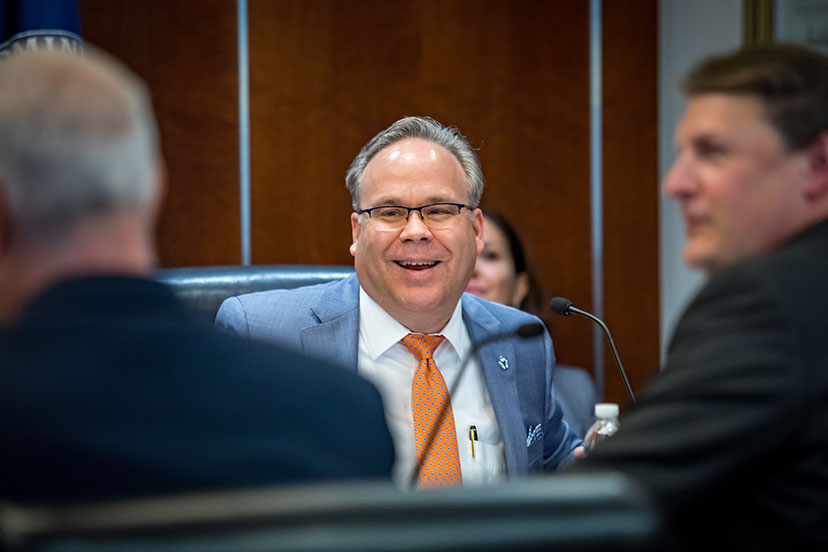
NCUA Board Member Todd M. Harper during the October 2019 NCUA Board meeting.
As Prepared for Delivery on October 24, 2019
Thank you, Chairman Hood, and thank you Larry, Tom, and Ariel for your presentation and for incorporating my requested changes into the text of the document before us today.
This final rule would provide federally insured credit unions with a greater balance between external funding sources and borrowings. As such, it would better enable these institutions to seek more reasonably priced funding options.
In its comment letter on the proposed rule, the National Association of State Credit Union Supervisors similarly noted that “[p]roviding credit unions greater operational flexibility to utilize external funding for liquidity makes sense from a regulatory perspective.”
I agree that greater access to such funds enhances credit union liquidity options and preserves other lines of credit.
In getting into the field around the country during the last six months, I’ve spoken directly with many credit union leaders. Through those conversations, I’ve gained a greater appreciation of how important public unit and nonmember share deposits are to some credit unions. When prudently managed, these funds allow credit unions to increase lending and better serve their members by meeting loan demand.
One conversation with a credit union on the West Coast brought this point home to me. The credit union has a high demand for the specialized loans it offers to small business owners and which few other lenders have the expertise to provide. But, with less than $100 million in assets, the credit union has limited resources to match that loan demand. So, the credit union has turned to nonmember share deposits.
Those funds have allowed the credit union to increase lending and improve the livelihoods of its members, create jobs, and strengthen the local economy. And, as one commenter on this rulemaking noted, in recent years, federally insured credit unions that have employed nonmember deposits have tended to be more active lenders and, therefore, achieved higher earnings on average than their peers.
That is a good thing, in my view.
Additionally, I am especially pleased that this final rule will retain the alternative $3 million limit for public unit and nonmember share deposits. I raised this point during consideration of the proposed rule. Small credit unions, and particularly newly chartered credit unions which haven’t had the time to become adequately capitalized, will benefit from the flexibility provided by keeping this limit.
Before yielding back, I do have several questions:
- Larry, one criticism that I have often heard is that this rulemaking will permit an increase in high-cost brokered deposits, which has resulted in problems for insured depository institutions in the past.
- We’ve discussed this issue before, and I think it would be helpful to shine some light on this matter.
- Would you explain why increasing the access of credit unions to nonmember and public unit share deposits is not the same as brokered deposits?
- And what safety and soundness guardrails will be in place to ensure that credit unions aren’t paying out unrealistically high rates on these share deposits?
- Another comment letter noted that system-wide nonmember deposits have increased fourfold in the last five years, from about $3 billion to more than $12 billion.
- Larry or Tom, what is driving this increase? How might this final rule alter this trend?
- Finally, Larry or Tom, how has asset-liability management changed in the last 31 years since this rule was previously considered? What tools and regulatory requirements are now in place to allow credit unions to prudently manage their operations?
It’s very good to hear that credit unions have become more sophisticated in asset-liability management.
When coupled with the guardrails contained in the final rule and the supervisory approach we will take going forward to ensure that credit unions will use these sources of funds consistent with prudent risk-management principles, this Public Unit and Nonmember Shares final rule will provide all credit unions, and especially small credit unions, with greater flexibility in their funding to better serve their members.
As staff has previously noted, such flexibility will enhance liquidity and the safety and soundness of individual credit unions and the system as a whole.
Accordingly, I will support this final rule.


